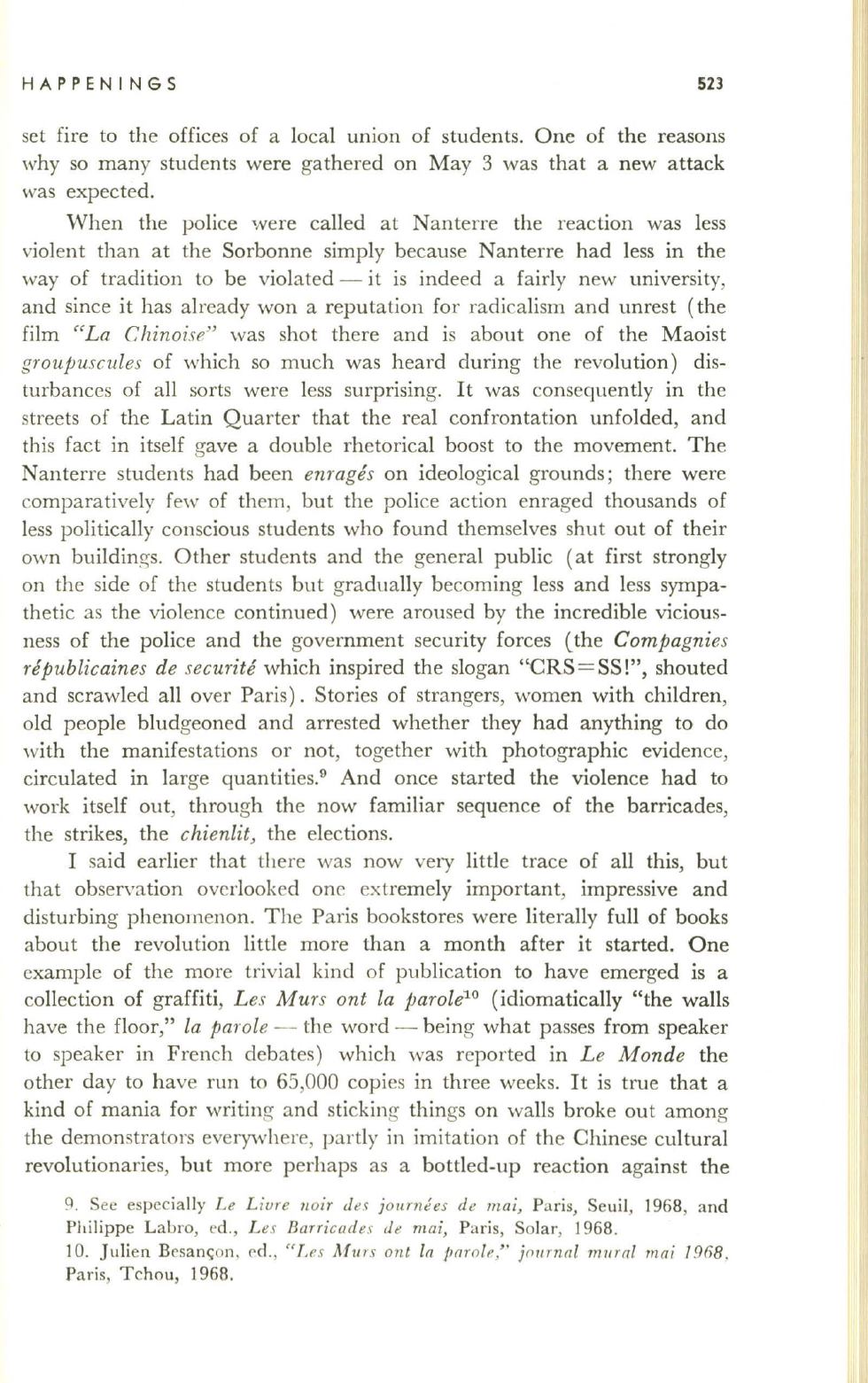
HAPPENINGS
523
set fire to the offices of a local UnIon of students. One of the reasons
why so many students were gathered on May 3 was that a new attack
was expected.
When the police were called at Nanterre the reaction was less
violent than at the Sorbonne simply because Nanterre had less in the
way of tradition to be violated - it is indeed a fairly new university,
and since it has already won a reputation for radicalism and unrest (the
film
«La Chinoise"
was shot there and is about one of the Maoist
groupuscules
of which so much was heard during the revolution) dis–
turbances of all sorts were less surprising. It was consequently in the
streets of the Latin Quarter that the real confrontation unfolded, and
this fact in itself gave a double rhetorical boost to the movement. The
Nanterre students had been
enrages
on ideological grounds; there were
comparatively few of them, but the police action enraged thousands of
less politically conscious students who found themselves shut out of their
own buildings. Other students and the general public (at first strongly
on the side of the students but gradually becoming less and less sympa–
thetic as the violence continued) were aroused by the incredible vicious–
ness of the police and the government security forces (the
Compagnies
republicaines de securite
which inspired the slogan "CRS=SS!", shouted
and scrawled all over Paris). Stories of strangers, women with children,
old people bludgeoned and arrested whether they had anything to do
with the manifestations or not, together with photographic evidence,
circulated in large quantities.
9
And once started the violence had to
work itself out, through the now familiar sequence of the barricades,
the strikes, the
chienlit,
the elections.
I said earlier that there was now very little trace of all this, but
that observation overlooked one extremely important, impressive and
disturbing phenomenon. The Paris bookstores were literally full of books
about the revolution little more than a month after it started. One
example of the more trivial kind of publication to have emerged is a
collection of graffiti,
Les M urs ont la parole
10
(idiomatically "the walls
have the floor,"
la parole
-
the word - being what passes from speaker
to speaker in French debates) which was reported in
Le M onde
the
other day to have run to 65,000 copies in three weeks. It is true that a
kind of mania for writing and sticking things on walls broke out among
the demonstrators everywhere, partly in imitation of the Chinese cultural
revolutionaries, but more perhaps as a bottled-up reaction against the
9. See especially
Le Livre noir des journt!es de mai,
Pa ris, Seuil, 1968, and
Philippe Labro, ed.,
L es Barricades de rnai,
Paris, Solar, 1968.
10. Julien Besan<;on, ed.,
"/,n "'fuTs
onl la parol"," journal mural mai 1968.
Paris, Tchou, 1968.


